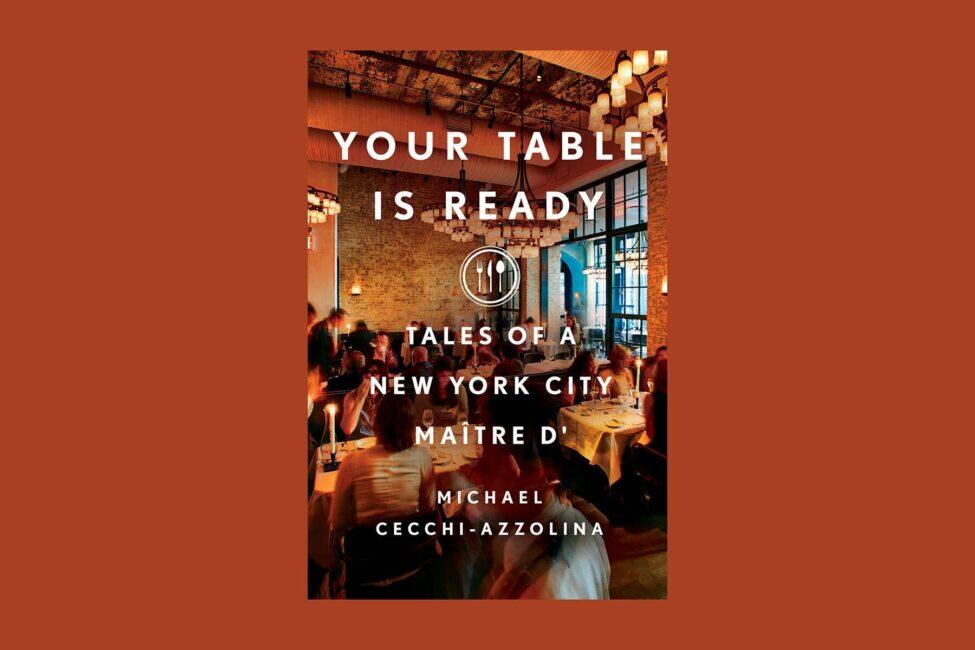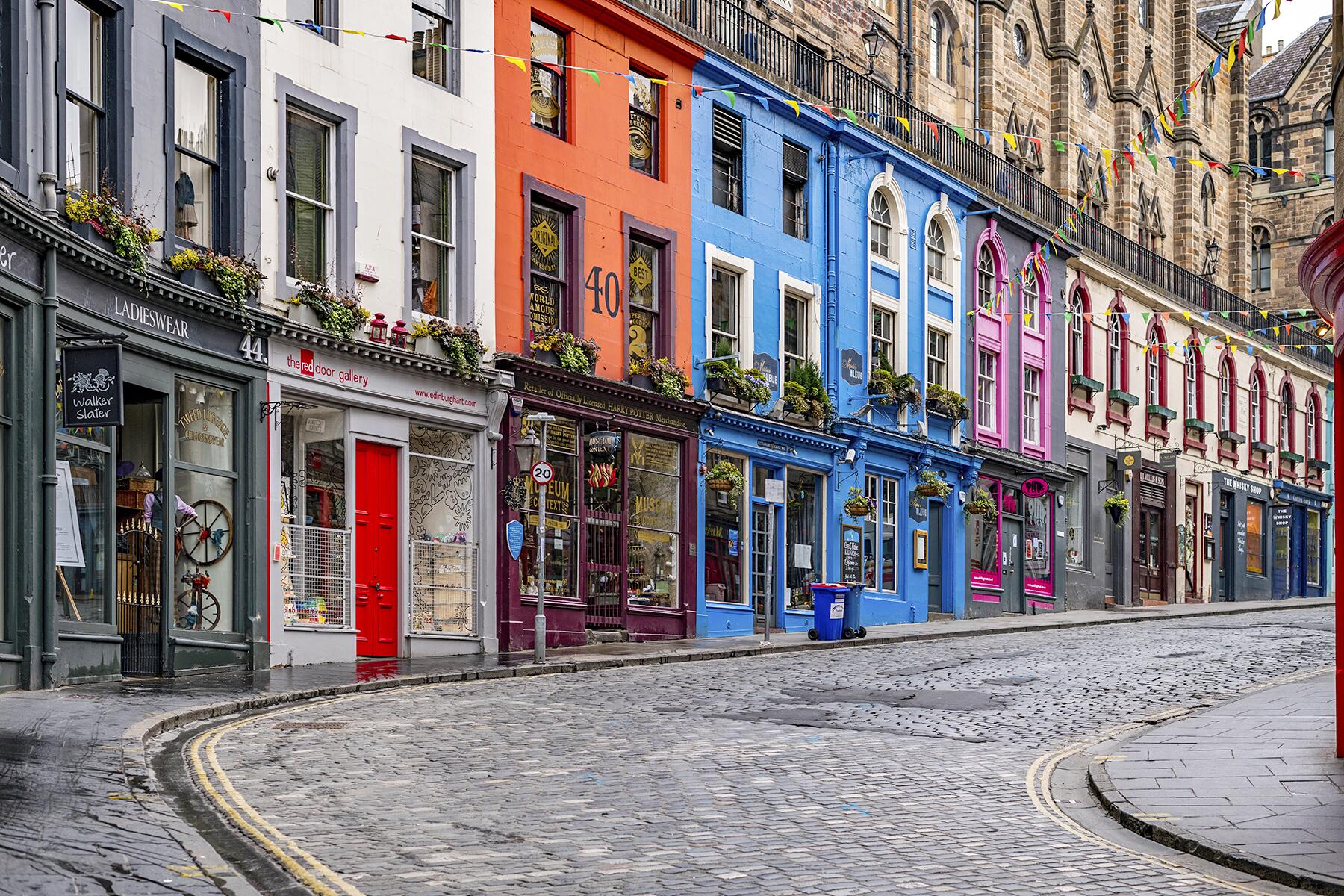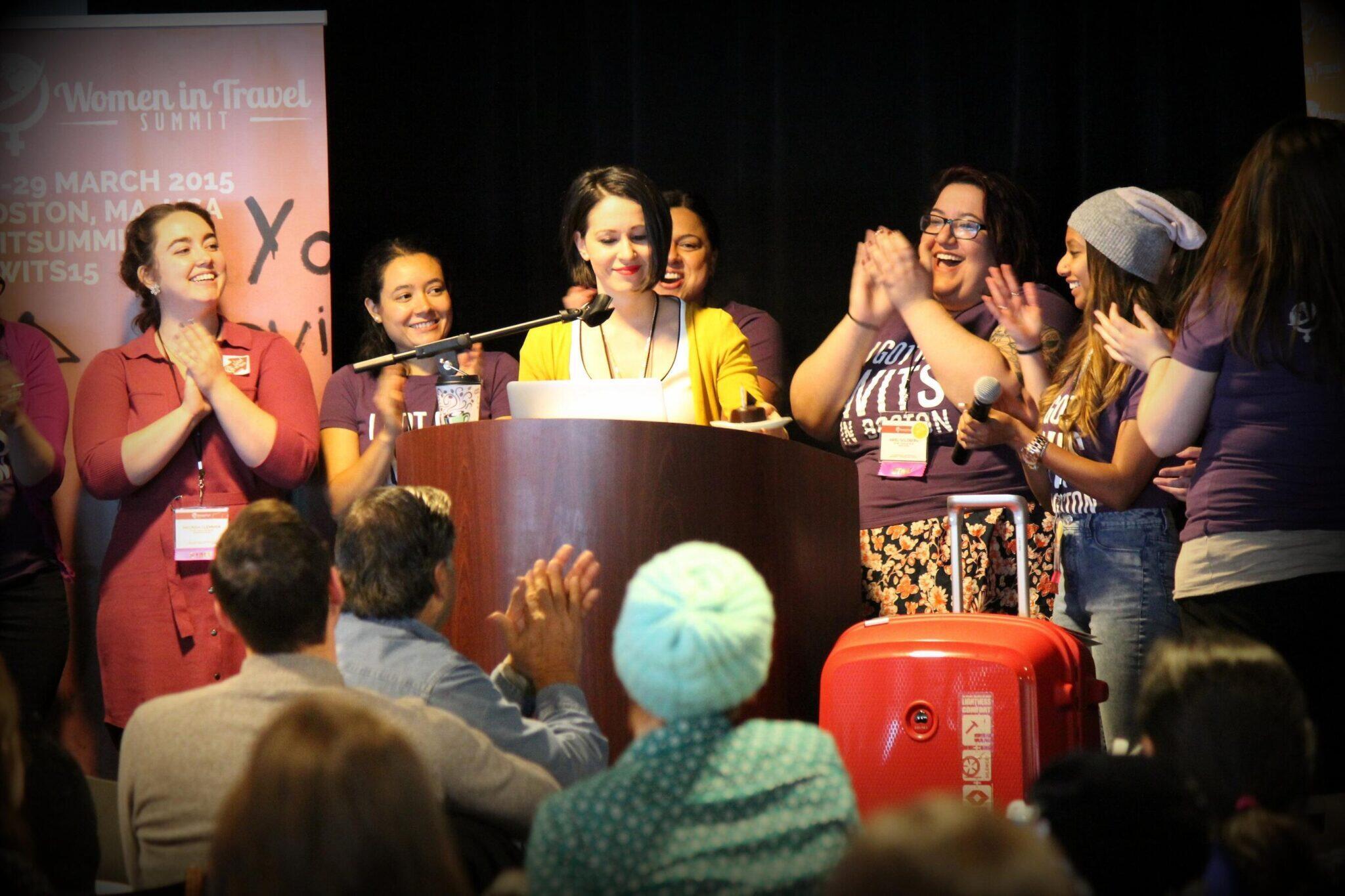In January’s Fodor’s Book Club Pick, 'Your Table Is Ready', a New York Maître D recalls 35 years of working his way through the city’s restaurant scene.
Restaurants are having a cultural moment. Just ask the cast of The Bear or The Menu, both of which are much-lauded recent Hollywood productions that take an unyielding look at life in the service industry. (The Menu is also about murder, but that’s a point for another day.) After restaurants were forced to close when COVID hit, people are once again remembering what they love about dining out, from the food to the overall atmosphere.
In the fine dining world, part of a restaurant’s certain je ne sais quoi comes from the maître d’hôtel, or maître d’ in common parlance. The front-of-house leader of a restaurant, the maître d’ oversees all wait staff and bus people, as well as handles customer reservations. In essence, they keep diners’ experience seamless and joyful. Being a maître d’ is also a powerful position. They’re not only the person responsible for sending over free champagne on a birthday, but they’re in charge of who gets a coveted table at some of the biggest culinary hotspots.
Michael Cecchi-Azzolina is one such maître d’, having spent 35 years working his way through New York’s restaurant industry and coming to run the front of house at some of the city’s most influential and popular eateries, including the River Cafe, Raoul’s, Le Coucou, and Minetta Tavern.
Recommended Fodor’s Video
In his new book, Your Table Is Ready: Tales Of A New York City Maître D’, Cecchi-Azzolina has spilled some of his more salacious and sordid tales from his decades on the job, as well as his tips and tricks for getting that coveted four-top in the corner. We break down the best nuggets from the book below.
FODOR’S BOOK CLUBWant to read more interviews like this? Make sure you’re signed up for Fodor’s Book Club. You’ll be reading our monthly picks alongside thousands of Fodor’s readers, be entered into exclusive giveaways and contests, and get more fun book-related content delivered straight to your inbox.

The Past and Present World of the Maître D’
The term “maître d’ hotel” means “master of the house” in French and was given to the head servant or butler in stately European homes starting around the sixteenth century. The phrase moved over to the restaurant industry sometime around the mid-nineteenth century and was shortened to maître d’ in the ‘40s. In Europe, the person holding the role of maître d’ may have been semi-formally trained in hospitality, perhaps attending a hotel school and generally knowing the ins and outs of the rules of service. In the states, we typically give the maître d’ moniker to the staffer who’s worked their way up through the ranks of the restaurant’s staff.
While the maître d’ used to be paid primarily out of a restaurant’s pooled tips, these days, the IRS says they have to be considered restaurant management, meaning most restaurants, save the truly fancy ones, just have hosts or greeters instead.
What’s More Important, Food or Service?
In the ‘80s, Cecchi-Azzolina interviewed for a gig with Danny Meyer, a legendary restaurateur who founded Union Square Cafe, Gramercy Tavern, Shake Shack, and several other storied and popular spots. During that chat, Cecchi-Azzolina says Meyer asked him, “What is more important, food or service,” a question that he’s thought about ever since. “I’ve worked with many great chefs, have been present in the service of hundreds of thousands of meals, some wonderful, some good, some average, and some inedible,” Cecchi-Azzolina writes. “Yet the one thing that keeps customers coming back over and over is the service.”
He continues, “We all want to connect, to be recognized, treated well; some of us need to be adored, ‘recognized’ either as the movie star we are, or the billionaire titan of Wall Street, or that politician, cop, restaurant-industry professional, tailor, construction worker, teacher—all of us want to be made to feel special, to be known and acknowledged… This is where the power of the great maître d’ hotels comes from. They recognize this, understand the psychology of it, how guests should be greeted, how to make them smile upon entering, and how to escort them to a table; these maîtres d’ know what it takes to be great.”
New York Restaurant Culture Flourished When Studio 54 Disappeared
Cecchi-Azzolina says that when Studio 54 mostly closed in 1980, it left room for New York City restaurants to lure in clout seekers and big spenders. Couple that with the Wall Street boom of the ‘80s, and you had a perfect storm of people looking for new places to see and be seen. Cecchi-Azzolina was waiting tables at the Water Club on the city’s East River at the time and says that the restaurant’s owners, Keith and Brian McNally, were well aware of the role their restaurant could play in the culture. “They staffed their eateries with beautiful people at the door and on the floor, and all the beautiful people followed,” he writes. “Everyone wanted in. It was a party, and all were welcome if you could afford the entry fee.”
Getting a Good Table May Come Down to Who You Are and Who You Know
While Cecchi-Azzolina says that restaurants are inherently a democratic institution—if you’ve got the cash to pay for your meal, you’re welcome inside the front door—where you sit might not be so judicious. As the author explains, “Most successful and hot restaurants release reservations at only the dreaded hours of five, five thirty, six, ten, and later. All the other openings are held and disbursed to the owner, chef, VIPs, celebrities, great regulars, and the best tippers.”
While this might have changed in the age of Resy and Open Table, restaurants may still use this ploy in bigger cities, especially because, as Cecchi-Azzolina writes, “Restaurants need celebrities as much as celebrities need the restaurants.” Thus, he says, celebrities, including actors, directors, singers, athletes, great chefs, politicians, models, Wall Street CEOs, and regulars who tip big are often the ones who can most easily land a hot restaurant’s best tables. He says people who live close to the restaurant also have some sway because “you always want the neighbors to feel welcome since they’re the backbone of the business and will keep coming once DiCaprio and crew have moved on to the next hot thing.”
How to Land a Great Table
Even if you’re not famous—and most of us aren’t—it is possible to land a good table at a nice restaurant. Cecchi-Azzolina says being nice to restaurant staff is a good start. If you’re a regular customer who’s always kind and generous, you have a better chance of landing that corner booth on your anniversary. Just ask politely and be open-minded.
If that doesn’t work, Cecchi-Azzolina recommends a well-placed bribe. As he puts it in the book, “If a guest comes in, gives their name, and hands you a hundred-dollar bill, are you not going to give them a great table?” And, yes, it should be a hundred. As Cecchi-Azzolina writes, “One hundred dollars is the gold standard and will get you pretty much anything you want. A nice thank-you for special attention is $50. A twenty is a token and always welcome, but it will not put you in the pantheon of great guests.”
Wine Sales Drive a Server’s Tips
Ask anyone who’s ever done sober January: If you’re not drinking, your restaurant tab will be dramatically smaller than if you are. That’s why restaurants and servers are keen on getting you to buy booze, particularly wine. Cecchi-Azzolina says wine sales drive tips, explaining that if you ate $90 worth of food alone and tipped 20 percent, that would mean $18 to the server. Add a couple of $15 drinks; now their tip is $21. If you pop for an inexpensive bottle of wine, that adds another $30 to $50 to the total, meaning another $10 or so goes toward that tip.
“Get in a big spender, a wine connoisseur, or someone wanting to impress his guests, someone who has enough cash that he could give two shits about the cost of a bottle, and the tip increases dramatically,” writes Cecchi-Azzolina. “If we add a modestly priced premium bottle of wine that costs, say, $175, there’s another $35. Our tip just went from $18 to $66, a 267 percent increase.”
Restaurants, the author says, may routinely hold tables for guests they know routinely spend $100 and up on wine. It’s sheer economics, and the restaurant is looking to make the most money possible on a guest who comes in.
Also, hardly anyone fails to do this these days, but please tip on wine. In the past, some people believed you shouldn’t tip on a bottle of wine for whatever reason, but as Cecchi-Azzolina aptly puts it in the book, “In a restaurant that prides itself on service, to not tip on the wine service, which is given by a trained professional who presents, decants, and pours each glass of that wine till it’s finished, is insulting to that server. We work on tips. We make no money on the bottle of wine you just purchased if you don’t tip on it. To not tip is to not acknowledge the expertise and effort of serving that bottle.”
Observe the Art of “Touching the Table”
Great restaurants know the value of “touching” every single table. That means that someone of value in the restaurant, be it the chef, the owner, or the maître d’ will, at some point, go around to every table in the establishment to check in, ask about the food, get to know the guests, and see if they can answer any questions. It pays to know if a customer is local if they’re loyal, what they like to eat and how they’re doing, and Cecchi-Azzolina says, “If treated well, respectfully, given a decent meal, they will return. It’s simple, but it works.”
Every Good Restaurant Has a Critic Protocol
One of the restaurants Cecchi-Azzolina opened, Le Coucou, would go on to win the James Beard Award for Best New Restaurant in 2017. When it opened, Cecchi-Azzolina writes, the staff knew to be on high alert for New York’s restaurant critics, installing a code word staffers could use when one was spotted at the door. In his example, he says the word was soufflé and that someone would quietly slink around the room once a critic was spotted, letting everyone know that a soufflé had been spotted. That meant everyone should be on their A-game because every little thing mattered.
Then, after a critic was seated at a table Cecchi-Azzolina said was specifically held in case of their appearance and would only be seated to the general public when they were fairly sure one wasn’t coming, about 30 minutes before the kitchen closed. Critics are often given a brand new set of menus and a brand new wine list, and the best staffers, including the head sommelier, would attend to all their service.
Importantly, Cecchi-Azzolina writes a restaurant’s staff is trained to not let critics know they’re onto them, saying, “They want to see you as you are and want no special attention. They want to be served exactly as every other person in the room.”
Of course, that doesn’t mean the critic was actually getting the same service. They were getting the very best. As Cecchi-Azzolina explains, “Once the critic’s order was put in the kitchen, the chefs would then prepare two of each dish ordered. They taste one and then send the other to ensure it is exactly right. After each course, the plates were then brought back to the kitchen for the chefs to inspect before being sent to the dishwasher. The chefs want to see what was and wasn’t eaten. If something was left on the plate, that was a danger sign. Did he not like it? Was it the guest’s plate or the critic’s? Did she taste it and put it back? Was the critic too full?”
Cecchi-Azzolina says the scrutiny is warranted because bad reviews can tank restaurants, so much so that Le Coucou’s owner even went out of their way to hire a critic spotter to act as host for the first few months they were open. That person, who Cecchi-Azzolina refers to as “Iron Bottom” in the book, successfully spotted every single critic that came into the restaurant, thus enabling the staff to do its level best on each occasion.
Even Celebrities Can Throw a Fit When They Don’t Get the Best Table
Cecchi-Azzolina has a number of good stories in the book about his run-ins with famous people, including a story about kicking Leonardo DiCaprio out of Raoul’s after the then-underage actor got a little too drunk. One of the most interesting stories comes later in the book, though, when the author describes a run-in he had while working at Le Coucou when he was informed that there was a woman insisting on a table for two somewhere private. When she was told there were no private spaces in the restaurant, she got rude and irate, saying she was bringing in royalty and then refusing to speak to the restaurant’s reservationist, who then referred the call to Cecchi-Azzolina.
He says he was adamant to the caller that the restaurant had no private tables and that she then asked to be seated between two tables that would then be left empty. He told the caller that the best he could do was a corner table with only one table next to it, and she demurred, taking the table.
Cecchi-Azzolina says on the night of the reservation, the two people arrived early and were asked to wait at the bar. At this point, one of the guests then became irate, telling Cecchi-Azzolina, “Are you aware my guest is dating Prince Harry and is about to be a duchess? Don’t you have a private area for us to wait?” He says he held back laughter, writing, “I could give two shits about Prince Harry’s date, and by the attention [she] was drawing from the crowd at the bar, nor did anyone else.”
Blame Cell Phones When You Have to Wait for a Table
If you’ve ever arrived at a restaurant on time for a reservation and then been asked to wait, you know the frustration that can ensue. You did your part of the bargain? Why can’t the restaurant hold up theirs?
Cecchi-Azzolina says that cell phones are often to blame—namely, the cell phones of the previous diners just sitting around taking up space. While he writes that things can always go wrong in service, like plates arriving late or checks getting dropped before everyone’s done ordering, “what we can’t do anything about are the fucking cell phones.”
“I cannot tell you how many times, on a busy night, the restaurant packed, guests have arrived and are waiting at the bar for their tables,” he continues. “The table is cleared of everything. It’s now time to leave. Inevitably, someone pulls out a cell phone. When it’s time to go, realize that and go because, one day, you will most certainly be one of those people standing at the bar and getting pissed because your table is not ready at the appointed hour.”
‘Your Table Is Ready: Tales of a New York City Maître D’ by Michael Cecchi-Azzolina (published by St. Martin’s Press) is available now in hardback, audiobook, and e-book.





I read this originally read this review on my cellphone. For some reason, the word Maître came out Matre. Disconcerting, to be sure. Glad to see it's properly spelled on the desktop version.